 |
| |
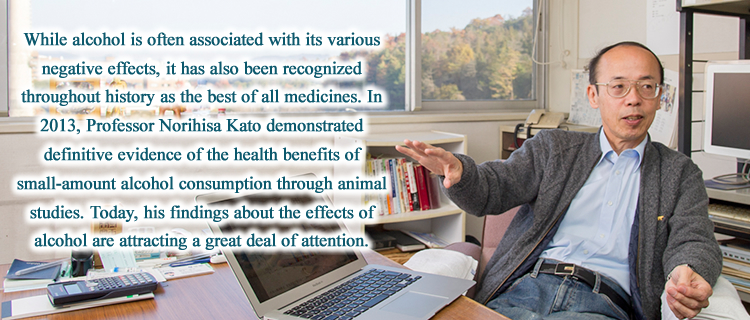 |
| |
|
Demonstrating the “J-curve effect” of alcohol through animal studies,
for the first time in the history
|
| |
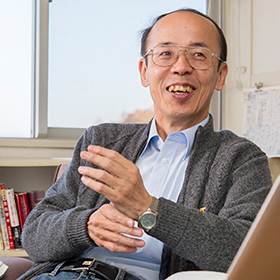 |
|
In 2013, Professor Kato released his world’s
first findings under the title “Demonstration of the J-curve Effects of
Alcohol through Animal Studies.”
“A British researcher proposed in 1981 that a small
amount of alcohol intake reduces mortality, while a high amount of alcohol
elevates mortality (now called ’J-curve effect of alcohol’). Subsequently,
this particular effect of alcohol was confirmed by many epidemiological
studies. However, no animal studies had been conducted to demonstrate the
J-curve effect of alcohol consumption. In fact, few studies on small-amount
alcohol intake had been conducted in the 30 years or so since the release of
the British report,” says Professor Kato.
He learned about these facts from a casual conversation
with a staff member of the National Research Institute of Brewing, whose
office is located next to his laboratory. The conversation inspired
Professor Kato to resume his studies on the effect of small-amount alcohol
intake on human health, a subject that had long interested him. |
|
| |
Numerous studies have been conducted on the
health hazards of alcohol. Intake of water with over 30% of alcohol content
exhibits acute toxicity in animal experiments. Various studies are being
conducted even today concerning the mechanism of alcohol’s toxicity and the
effects of alcohol on the metabolization of nutrients.
“Since I was young, I have always been interested in the
effect of small-amount alcoholic intake. So when I heard that there had been
very few experimental studies concerning this subject, I decided to do
research using experimental animals,” says Professor Kato.
He launched a series of animal experiments, using mice
and rats, to demonstrate the effect of small-amount alcohol intake, known as
“J-curve” (previously called “U-curve” in 1981).
|
|
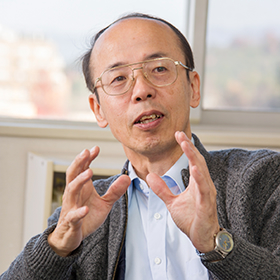 |
|
| |
|
The idea of giving water with alcohol content of 1% led to an
unprecedented accomplishment
|
| |
 |
|
Following are the details of his experiment:
First, he gave senescence-accelerated model mice free
access to one of three kinds of drinks: water containing 1% ethanol, water
containing 2% ethanol and plain water, and kept the mice for 22 weeks. As a
result, the aging speed of the mice given water with 1% ethanol was found to
be slower than in those given plain water and water with 2% ethanol.
Professor Kato explains, “There are various strains of
senescence-accelerated mice. First, we used SAMP1, which develops regular
symptoms of aging. Next, we used SAMP8, a strain that shows severe symptoms
associated with aging of the brain, such as learning and memory disorders,
and found that 1% alcoholic content had the effect of reducing brain
senescence as well.”
|
|
| |
Furthermore, Professor Kato conducted a
similar experiment on rats fed a high-fat diet, in which he observed
improved liver function in a group of mice that were given water with 1%
ethanol when compared with plain water and water with 2% ethanol.
When these findings were announced, they became big
news--both in Japan and abroad.
“The idea of using 1% ethanol was quite new; that, I
think, led our efforts to success,” says Professor Kato. In terms of human
alcohol intake, 1% ethanol is equivalent to a 250-500 ml can of beer, which
coincides with the “moderate alcohol intake per day” indicated by many
epidemiological studies.
“Our findings fundamentally changed alcohol-related
studies. It was a complete innovation, marking a revolution of one research
area and the emergence of an entirely new field. What contributed most to
this development was a demonstration by animal studies,” comments Professor
Kato.
In the years to come, Professor Kato plans to study in
further detail the mechanisms of the effects of alcohol and how alcohol
works against cancer, dementia, diabetes and other diseases. |
|
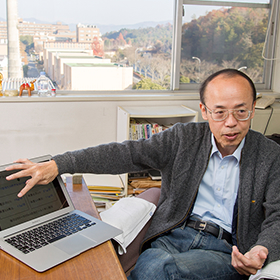 |
|
| |
|
Meeting people from different fields of specialization prompted him to
pursue his long-cherished dream of studying alcohol effects; support from those around
him keeps him going
|
| |
|
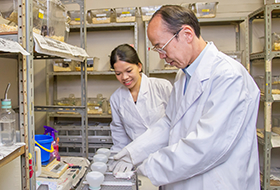
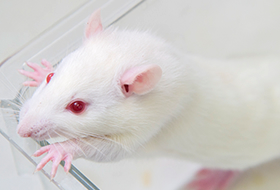
|
|
Asked about his future career goals,
Professor Kato answers that he wants to “conduct research that excites me.”
“I believe all researchers share the aspiration of doing out-of-the-box
research that transcends disciplines— the kind of research that allows us to
think freely is exciting, and eventually moves us enormously. I myself have
been dreaming of doing that kind of research.”
Because of intense competition among researchers,
continuing research is also a mentally exhausting process. Away from such
hectic, day-to-day struggle, researchers tend to find “something,” the kind
of encounter that directed Professor Kato himself to the recent
research.
“In my case, too, it really came out of the blue. It is
great to engage in research activities that are fun, have direct relevance
to society, and make everyone happy. And if we can contribute to society or
our local communities with our findings, we will be happy and students will
feel excited; that will have tremendous educational effects. I would like to
continue looking for and engaging in that kind of research activities in the
years to come.”
It may not be an easy task for most researchers to
realize their dreams while pursuing their lifetime research interests.
“Meeting the right people is the key,” says Professor Kato. Having met the
right people and made his dream come true, he would like to see the same
thing happen for his students, who will lead the future of science.
|
|
| |
| Norihisa Kato |
|
Professor, Laboratory of Molecular Nutrition
January 1, 1981 – March 31, 2001: Associate Professor, Graduate School of Biosphere
Science, Hiroshima University
April 1, 2001 – Present: Professor, School of Applied Biological Science, Hiroshima
University
Retired on March, 2017
|
| |








